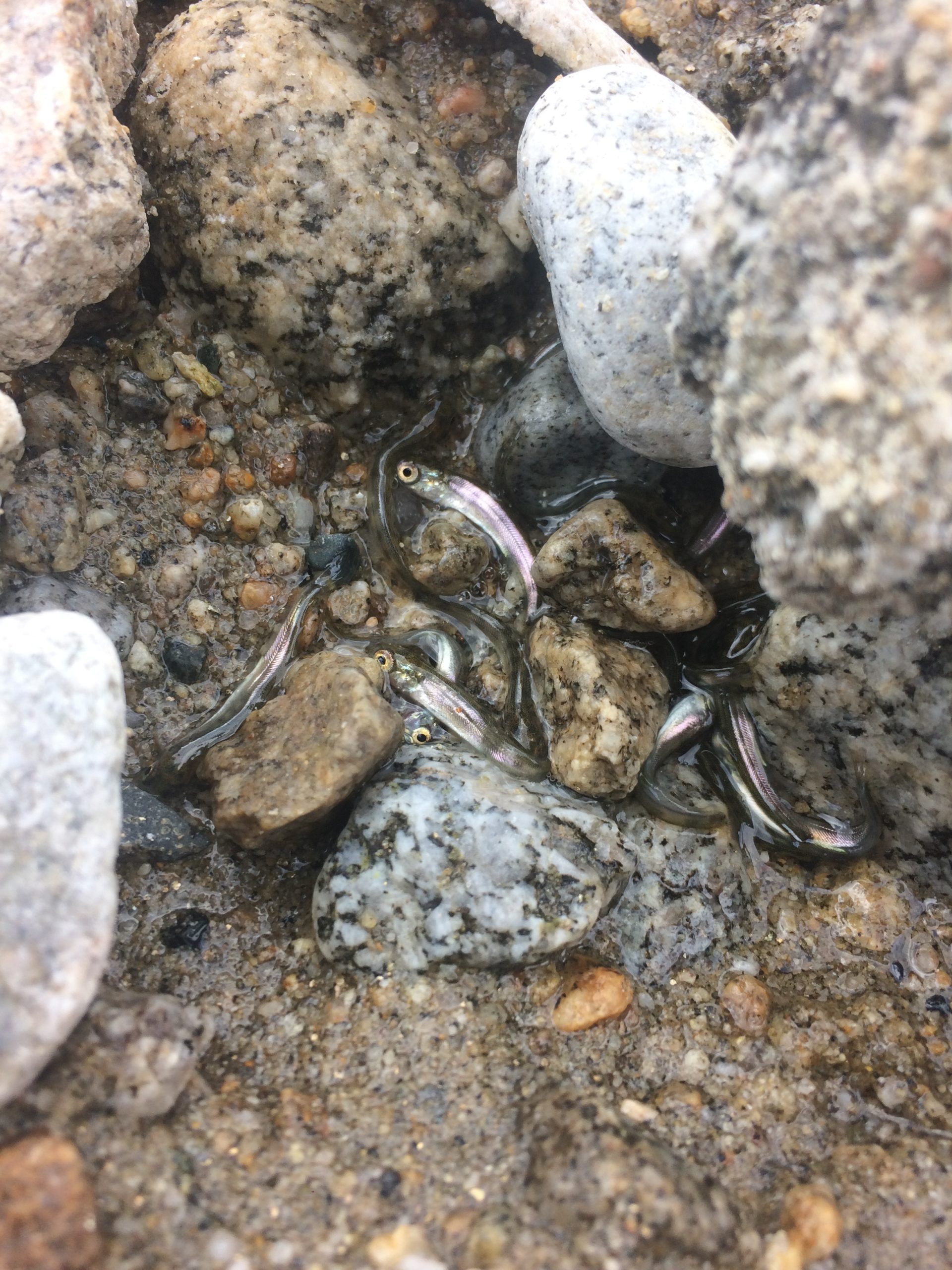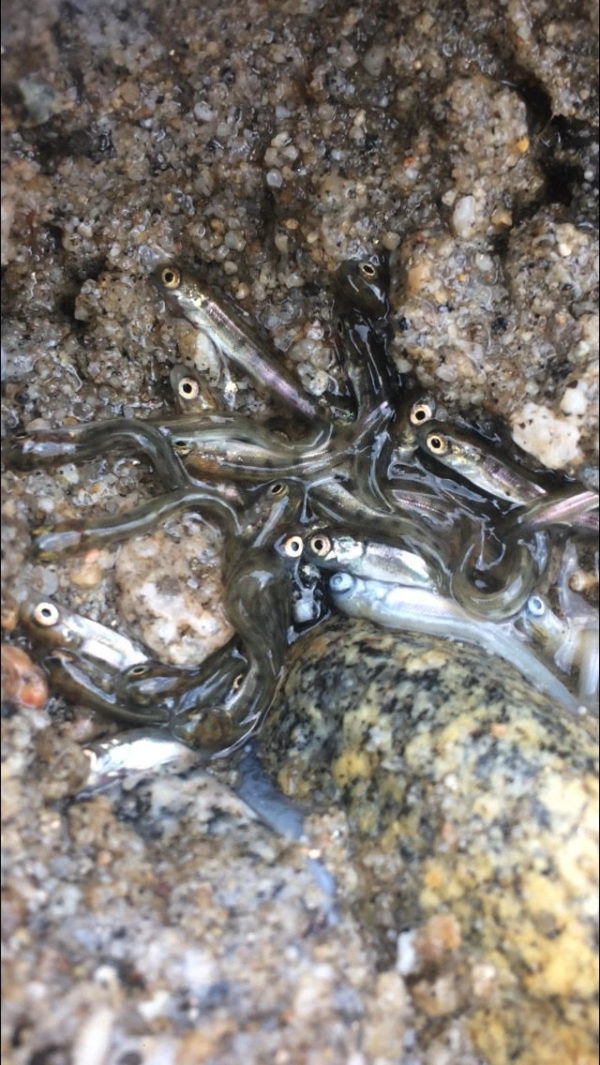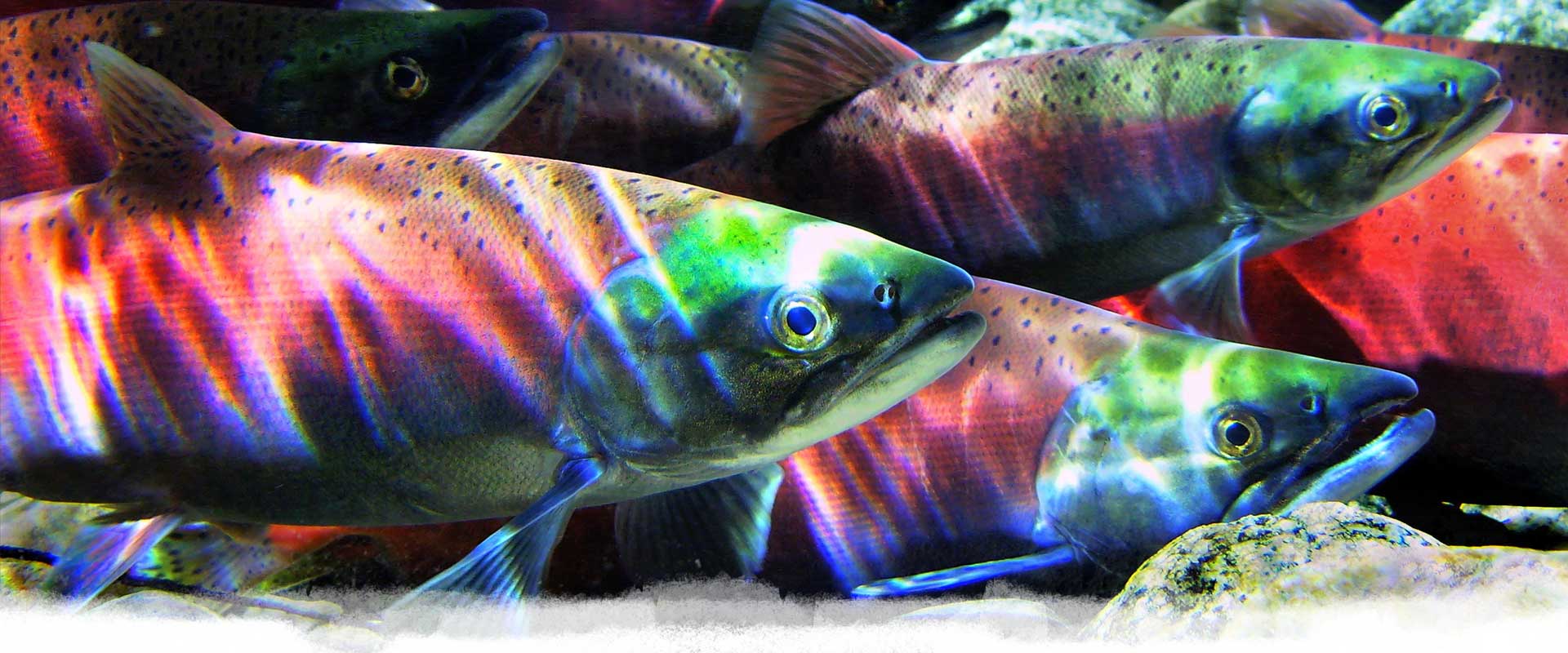
01 Apr March 29 Shore Spawning Kokanee Dewatered Redds Survey
On Monday, March 29 2021, our Assistant Program Manager Kayla joined BC Ministry of Forests, Lands, Natural Resource Operations and Rural Development (FLNRORD) Fisheries staff for an assessment of dewatered shore spawning kokanee redds along Kootenay Lake’s West Arm in the 6-mile area.
The purpose of the survey was to confirm that shore spawning kokanee redds were dewatered at four known spawning sites, including FoKLSS’s restoration site at McDonalds Landing, and estimate the percentage of redds that had been dewatered. The process was simple – visually identify a redd, and confirm its identity by digging into the gravel to see if kokanee fry were trapped within.
It was Kayla’s first time witnessing the occurrence first hand. “It was heart breaking to see so many kokanee fry stranded, unable to make it to the lake. I saved as many as I could by carrying shovel-fulls to the water’s edge. My attempts felt frivolous, squishing half as many as I was saving. I dug small trenches from the redds to the lake hoping the fry would find their own way, but it was so hard to not squish fry by doing this. What they need is for water levels to be at the same level during spawning as they are during fry emergence.”
Kootenay Lake’s water levels are drawn down this time of year to make way for freshet (high water) with the coming of spring. This dewaters some kokanee redds that were created above the low water mark when water levels were higher in the fall. Friends of Kootenay Lake has attempted negotiations with BC Hydro and FortisBC to keep water levels lower in the early fall during spawning season so that kokanee do not lay their eggs in areas that will dewater during fry emergence. The solution however is not as simple as lowering water levels in the fall, since Kootenay Lake water levels are governed by the International Joint Commission which is guided by the Boundary Waters Treaty.
Most, if not all, of the stranded fry will perish due to lack of water or starvation. Volunteer efforts can help to save fry by carefully scooping them up in small containers and carrying them to the water, but this is not a long-term solution to the problem, nor a solution that should be taken into the hands of volunteer citizens.
Days like these serve as a powerful reminder of our impact on aquatic ecosystems, and that we still have a lot of work to do if we want to see more reproductive success for species like the genetically-distinct shore spawning kokanee of Kootenay Lake.


